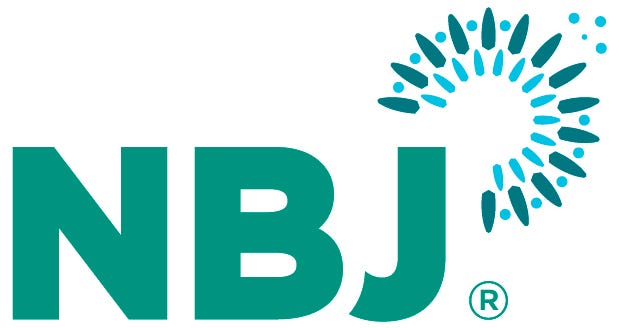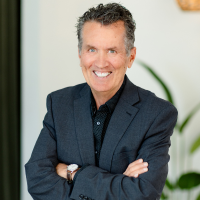
With a long history in natural and organic products, including being CEO and president of Spectrum Naturals, Neil Blomquist can talk about supply chains across a variety of categories. Right now, he is focusing on the palm oil industry and a supply chain famously fraught with problems both environmental and economic. Working with Natural Habitats to convert palm plantations to organic and regenerative agriculture, Blomquist’s Palm Done Right program intends to upend the palm oil equation to promote better practices, a cleaner supply chain and a greater awareness of the health benefits of palm oil.
NBJ: You use the term ‘conflict palm.’ How do you define that?
Blomquist: Palm that is produced under conditions that are not protecting the environment, or the local social communities, or the habitat. You look at what is going on in Malaysia and Indonesia where they are breaking ground in rainforest, virgin rainforest that’s being displaced by palm plantations, and land grabbing, and paying really low wages for the local people. Big companies are literally taking land away from people in these local areas that have small farms, and it’s sanctioned by the government. Look at the habitat destruction that goes along with the rainforest destruction. Populations of orangutan and other animals have been severely reduced because of expansion of palm plantations in that part of the world.
NBJ: Do you think consumers are aware of how much conflict palm is in products?
Blomquist: No, I don’t think they have a clue. I think that consumers see it if they’re paying attention to what’s on the internet. Occasionally you’ll see a story come up in the mainstream media about the problems that are occurring. About all they think about is ‘I’m going to avoid palm.’ That’s their reaction. It puts them in this place that even if there’s palm that is done right somewhere in the world, it’s still on their negative side of their brain that there’s got to be a problem with it. I think where the awareness is, that’s where most of it is focused: ‘Palm is bad, and I’m going to avoid it.’
NBJ: Do they know conflict palm is even in the natural product space?
Blomquist: I think the majority of consumers don’t. I think some of the more conscious, committed consumers do, and I think that’s where retailers are getting complaints. There are customers coming to them and questioning, ‘Why are you selling products with palm in them?’ I know the retailers are getting hit with that. The brands that are using palm also get that kind of reaction. What we’re trying to do is give our partners a way to be able to respond to that with a real clear, easy to understand story around Palm Done Right.
NBJ: When you talk to brands and manufacturers and you say ‘Palm Done Right,’ do they instantly grasp that?
Blomquist: Depends on where they are in the whole space. I can use some specific examples. A fairly young brand that is one of our partners, Luke’s Snacks, produces potato chips, corn chips, all that kind of stuff. The founder is a friend of mine that I’ve helped over the years, and there’s a trusting relationship. When this whole program came out I approached him and said ‘You should look at palm as part of your supply chain.’ His reaction was, ‘Palm? I don’t want to touch palm because all I hear is negative stuff about it.’ When I got him to try it and to understand its functionality, where it is from a cost comparative perspective, and all the things that make it a really functional product for him, there was a gradual process of conversion which required me to go in and educate their team around how to respond to the consumers who were calling and asking, ‘Why are you using palm?’ This was before Palm Done Right. It’s part of the experience in leading up to it and actually working with people on how to address the issue.
NBJ: How do you describe the Natural Habitats mission?
Blomquist: Their mission is to support small family farms in parts of the world that are producing palm oil and to do it with a totally committed organic supply chain that focuses on social development programs for those regions of the world.
NBJ: What’s the transition like for farmers that they bring over?
Blomquist: The time transition depends on what they’ve been doing in the past. There are some farmers that aren’t using chemicals. That’s pretty easy to transition. It can be less than a year going through that transition. For farmers who have been using conventional methods that may include herbicides, and pesticides, and chemical fertilizers, there’s a 2-year transition period. During that transition period, Natural Habitat is subsidizing their harvest of the palm because they are having to sell it into the conventional supply chain at a lower cost, and they generally see yield reduction that occurs during that period because they’re pulling all of the chemical inputs to start the organic process, It takes time to rebuild the soil. There are agronomists that work with those farmers. They help them in identifying what it is they need to get the fertility up, such as cover crops using certified organic fertilizers where they can. All of that is part of that transition process.
NBJ: What do people need to know about the health benefits of palm oil?
Blomquist: There has been a lot of bad science around to get palm oil and other tropical oils out of the market. We now know that saturates play an important role in human nutrition. Our brains are virtually all saturated fat. Saturated fat is ubiquitous to our system for a healthy lubricated body, and lymph system, and so on. If you just ate saturated fat, you’d have health issues. When used in combination with other fats, it’s a healthy ingredient. Red palm oil, the unrefined version, has the concentration of naturally occurring beta carotene and vitamin E in the form of tocopherols and tocotrienols, as well as the other phytonutrients that come with an unrefined oil. That’s the part that has really been unexplored—using it as a key ingredient in functional food, as a superfood or however you want to define it.
NBJ: Does the organic process affect those healthy properties?
Blomquist: Yes, the physical refining process that is accepted for organic products is a more benign refining process compared to conventional. It uses lower heat, less time exposure. You often end up with a finished product that looks a little different, has more color, and may have a slight amount of odor compared to the conventional part that’s so neutral in color and odor. It ends up with a higher level of micronutrients that are still retained after it’s refined. For example, when red palm goes through the organic refining process, there’s still about 40% retention of the vitamin E levels that are in unrefined palm, but for conventional it’s probably less than 20%.
NBJ: So is palm oil being left out of the fats-are-healthy trend?
Blomquist: For the most part, yes. You hear about coconut oil a lot because of its popularity. You don’t hear or read too much about palm because, I think, there’s this fear about palm oil and conflict palm that is in the headlines.
NBJ: Natural Habitats is active in Ecuador. Is there enough land there to meet the demand if you see this transition with consumers?
Blomquist: Yes. There’s a lot of potential to convert more farmers. There are farmers who are lined up wanting to come into the supply chain. We’re adding farmers, to match the growth on the sales side, to fulfill it without having too many farmers and too much oil. It’s a delicate balance. As of last year, the Sierra Leone project is starting to produce oil, certified organic oil, for the first time. The supply chain is about a tenth the size of what’s in Ecuador, but long-term it’s where the company’s heading, to produce more there than in Ecuador because of the availability of land that needs to be rehabbed, the number of farmers that are participating, and now a nursery that’s been created to supply trees to farmers. That’s going to be a big part of the future for the company.
NBJ: Are you going to put Southeast Asia out of business?
Blomquist: It’s doubtful. I hope we can have an impact. My dream would be that there’s enough impact on their pocketbook to get them to pay attention and start to look at how to address this growing demand for non-conflict palm in a real way.
NBJ: For consumers, for brands, do you see a tipping point, or is this still an evolutionary transition?
Blomquist: I think it’s more evolutionary and transitional, although I think if we got enough retail support for this where we can get standards put in place that force the issue with the brands.It’ll get to the tipping point because it doesn’t take a whole lot when it starts to hit the pocketbook before change starts to occur. We saw that with GMOs, for example. There were GMOs in a lot of products three, four years ago that are out of the food chain now as a result of players with enough strength stepping up and saying, ‘That’s enough. We’re not going to carry your product anymore unless you get it out of there.’ I think there are similarities here that you can look at. I think it’s a little more complex compared to the GMO issue, but there are similarities.
NBJ: What are the benefits for farmers of growing palm in the Palm Done Right model?
Blomquist: Some of it is just the nature of how palm is grown and harvested because it’s a year-round harvest for the farmers and gives them year-round income. They don’t have to plant and replant. It’s a lower carbon footprint supply chain compared to other oils, especially seed oils. Really the closest comparison is olive oil where you have an orchard with trees that can produce for years and you’re not planting and replanting all the time. There’s a once a year harvest for that compared to this ongoing harvest that occurs with palm. That’s an advantage for the farmer to have that steady income rather than waiting until the end of the year.
NBJ: What about environmental benefits?
Blomquist: If it’s properly managed, it provides a good habitat for other plants and species of animals and plants to be able to flourish. If it’s done organically, there’s a nice environment there and you see the comeback of plants that were indigenous disappeared because conventional farmers are often spraying herbicides and nothing grows. The other part of it is putting the farmer’s land into use in a way that is organic and helping them create fertility that didn’t exist before, even before they started farming, because the whole idea is to create conditions that are absorbing carbon from the environment by using compost, and by using cover crops, and doing things that are accomplishing the task of creating it and forming it to be able to actually absorb carbon. This whole push that’s going on now within the organic community to not just grow organic but to grow organically in a way that really creates the environment for agriculture to be a huge factor in combating climate problems.That’s the big push right now. That’s part of what’s being done there to create that level of fertility. It also results in higher yields for the farmers over time.
NBJ: If there was consumer awareness around those benefits, would it accelerate the shift to a better supply chain?
Blomquist: I think that would add to the momentum for sure. I think it’s really at its early stage right now. I’ve seen more and more forums that are coming up and articles being written about the whole concept of taking organic to this next level. I think it’s going to be a big movement. There’s this next level of organic farming that is going to really have an impact.
About the Author
You May Also Like






